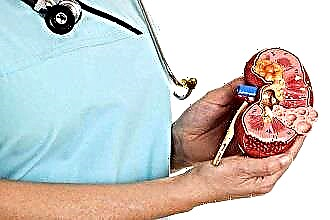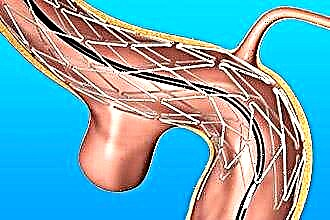Arrhythmia is a common condition that disrupts the heart rhythm. There are many types of changes in the cardiac cycle, among which the most dangerous is paroxysmal arrhythmia, in other words, an arrhythmia attack. The paroxysmal form of the disease can provoke the development of severe pathologies. Frequent cases of rapid heartbeat can increase the size of the myocardium, which badly affects its functionality, heart failure develops, thromboembolic formations can occur in the heart, which, breaking away from the wall of the heart muscle, enter with the blood flow to any organ, blocking the flow of vascular fluid, and together with her and oxygen. This situation is deadly, so everyone should know how to recognize an arrhythmia attack and what to do to improve the condition, even being completely alone.
What causes the seizure?
The onset of an attack of cardiac arrhythmia can occur for completely different reasons, ranging from ordinary fatigue or physical exertion, to the presence of serious cardiac pathologies, in which arrhythmia acts as a clinical manifestation. Therefore, etiological factors are divided into three main groups that cause an increase in heart rate:
- Organic lesions of the heart.
These include severe pathologies that, as a consequence of their course, disrupt the work of the heart, and especially its electrical system. These are myocardial infarction, heart defects, ischemic disease, myocarditis, myocardiopathy, supraventricular and ventricular tachycardia, fibrillation.
- Violations of the water-salt balance.
Pathological changes in the water-salt balance lead to a deficiency or excess of magnesium, calcium, potassium and sodium in the body. Potassium is important for normal cardiac conduction and a normal cardiac cycle. Its compounds are responsible for the favorable conduction of impulses in the heart muscle, and, therefore, control of the heart rate.
- The influence of external factors on the body.

These include strong physical exertion, stress, lack of sleep, overwork, colds. Frequent emotional swings can provoke a psychoemotional disorder that disrupts the normal functioning of the nervous system and adversely affects the work of the heart.
There are many reasons that cause rhythm disruption. Each of them leads to pathological changes in the main muscle and poses a threat to the general state of the body. Therefore, it is important to know how arrhythmia attacks pass and what methods exist for stopping them.
How does it go?
Many patients do not notice the passage of an arrhythmic attack, since they do not observe a significant deterioration in the state of the body. Moreover, its occurrence can be irregular and occur very rarely, once a month or even a year. But over time, attacks of arrhythmias become more frequent and can be repeated daily (in severe forms).
To determine the onset of an attack, you should pay attention to the typical symptoms that accompany it:
- there is a significant fluctuation in the heartbeat;
- increased pulsation of the cervical veins;
- loss of muscle strength;
- excessive sweating;
- dizziness;
- heart pains of an angina pectoris (painful, pressing sensations behind the sternum, which can be given to the left arm, jaw or neck);
- dyspnea;
- panic attacks, which manifest as heightened feelings of anxiety and fear;
- in rare cases, light-headedness or fainting is noted.
Arrhythmia is divided into forms of its manifestation, in which the heart rate and heart rate change. There are also atypical symptoms of seizure progress.
- With bradycardia, there is a decrease in the rhythm of less than 60 beats per minute. This condition is characterized by convulsions and loss of consciousness, which can last no more than a minute, or even a couple of seconds.
- With tachycardia, the heartbeat increases to 100 or more beats per minute. During this attack, there is a severe shortage of air.
- Irregular heart rate (atrial fibrillation), which is characterized by a sharp increase in heart rate, and then the same sharp decrease. This is what distinguishes it from other types of arrhythmias.

Any of the above arrhythmic paroxysms is life-threatening, since disturbances in the cardiac cycle can cause myocardial arrest.
How should you proceed?
Arrhythmia attack is carried out in different ways, depending on the form of rhythm changes, its increase or decrease. Doctors have developed techniques that the patient can perform independently. People who are at risk of arrhythmic conditions need to know well what to do during an attack, and what manipulations can be performed.
With bradycardia
If a patient has a decrease in heart rate fluctuates in the range of 35-40 beats per minute, the following recommendations should be followed, which contribute to an increase in heart rate.
- Drink a cup of hot strong and very sweet black tea.

- Take a bath with warm water.
- Get some exercise.
These manipulations contribute to an increase in heart rate. However, if an attack occurs, an ambulance should be called. Under attacks of bradycardia, serious pathologies can be hidden, which, if inactive, progress and can provoke cardiac arrest.
If the heart rate is less than 35 beats per minute, then you cannot do without outside help.
- The patient should be laid on his back, and a pillow or blanket, rolled into a roller, should be placed under his feet so that the leg elevation is 45 degrees.
- If the patient complains of pain in the heart or sternum, the drug "Nitroglycerin" should be taken. The tablet is placed under the tongue, and a solution in the amount of two drops is dripped onto sugar.
- If the patient has lost consciousness, it is necessary to perform artificial respiration. In the absence of a pulse, an indirect heart massage.
These measures are very limited and are used in order to delay the time until the arrival of the doctor.
With tachycardia
Tachycardic attacks are marked by a strong increase in heart rate, more than 80 beats per minute. These increases can reach 200-220 beats per minute, which is very dangerous for the body.
With this attack of arrhythmia, it is important to calm down as much as possible if it is caused by an emotional change. If the state  provoked by physical activity, then you should immediately stop it and lie down to ensure complete rest. It is also necessary to provide a full flow of fresh air: open windows and doors if the patient is in the room; unfasten the collar and belt, remove the tie, and if the clothes are too tight, remove them.
provoked by physical activity, then you should immediately stop it and lie down to ensure complete rest. It is also necessary to provide a full flow of fresh air: open windows and doors if the patient is in the room; unfasten the collar and belt, remove the tie, and if the clothes are too tight, remove them.
If, after carrying out these manipulations, the heart rate does not decrease, you should turn to pharmaceutical preparations of a sedative effect. This group includes herbal sedatives: valerian, motherwort, peony, hawthorn, as well as their complex infusions. If ineffective, you should resort to a combined sedative drug - "Corvalolu". The number of drops of the drug should correspond to the number of years of the patient.
The vagal technique will tell you how to relieve an attack of tachycardia. It is carried out in several stages:
- Holding your breath - you need to take a very deep breath and hold it for a short while, making a manipulation similar to pushing air.
- Pressure on the eyeballs - performed with light force with two fingers for several minutes.
- Carotid sinus massage is a maneuver of lightly massaging the right carotid artery.
You should put your fingers in the area of the artery (be under the cheekbone in the fossa to the right of the Adam's apple) and massage this area with moderate pressure, periodically moving to the cervical part (found below the jaw). It is important not to transmit the carotid artery, as this can cause loss of consciousness, which is very dangerous at the time of an attack.
- immersion reflex - a maneuver of immersing the face in cold or ice water for a few seconds is carried out, in which the heart rate is automatically slowed down.
Counting the numbers out loud is considered a good soothing move. To do this, the patient must put the fingers of his right hand to his left wrist, feeling for the pulse, and counting it, not paying attention to its loss. Doctors say that this kind of manipulation is very effective in seizures due to emotional distress.
With atrial fibrillation
Irregular changes in rhythm are very dangerous, therefore, the first thing to do is call an ambulance. From pharmaceutical sedatives, the patient can take Valocordin or Corvalol. After taking these drugs, you should sit down in a comfortable position or lie down. Then, before the arrival of the doctor, you can perform any of the methods of reflex rhythm correction.

These include the following maneuvers:
- Massage of the carotid sinuses (the scheme of the maneuver is described earlier in the text), but this procedure should not be used in old age. This is due to the likelihood of atherosclerotic deposits in the vessels, which in the process of massaging can break off and get to the brain, provoking a heart attack.
- Massage of the solar plexus - uniform punches are made into the plexus zone (located in the abdominal region, two fingers below the ribs). This maneuver is not relevant for obese people, since body fat does not allow a push.
- Holding the breath as you exhale increases the concentration of carbon dioxide, as a result of which the heart rate decreases.
- The principle of straining - you need to take a deep breath, hold your breath and strain, holding out in this state for 5-10 seconds. After - exhale the air in portions, through the lips folded into a tube.
These exercises will help to normalize the heart rate and hold out until the doctors arrive.
There is a method for quickly relieving arrhythmia attacks, which is called a "pill in your pocket." This method is followed by people who have visited doctor and identified the direction of pathology. The doctor prescribes a special drug on an individual basis, which quickly and effectively stops the attack. In case of its occurrence, the patient independently applies the required portion of the drug, and does not go to an ambulance.
doctor and identified the direction of pathology. The doctor prescribes a special drug on an individual basis, which quickly and effectively stops the attack. In case of its occurrence, the patient independently applies the required portion of the drug, and does not go to an ambulance.
If you notice any heart rate abnormalities or typical symptoms of arrhythmias, it is important to seek the help of your healthcare professional. If the attack occurred for the first time, you should not panic and try to quickly help yourself, since very often we are alone. After stopping, you should immediately undergo a complete medical examination. Perhaps the change in the cardiac cycle is caused by a serious pathology that requires immediate treatment.





